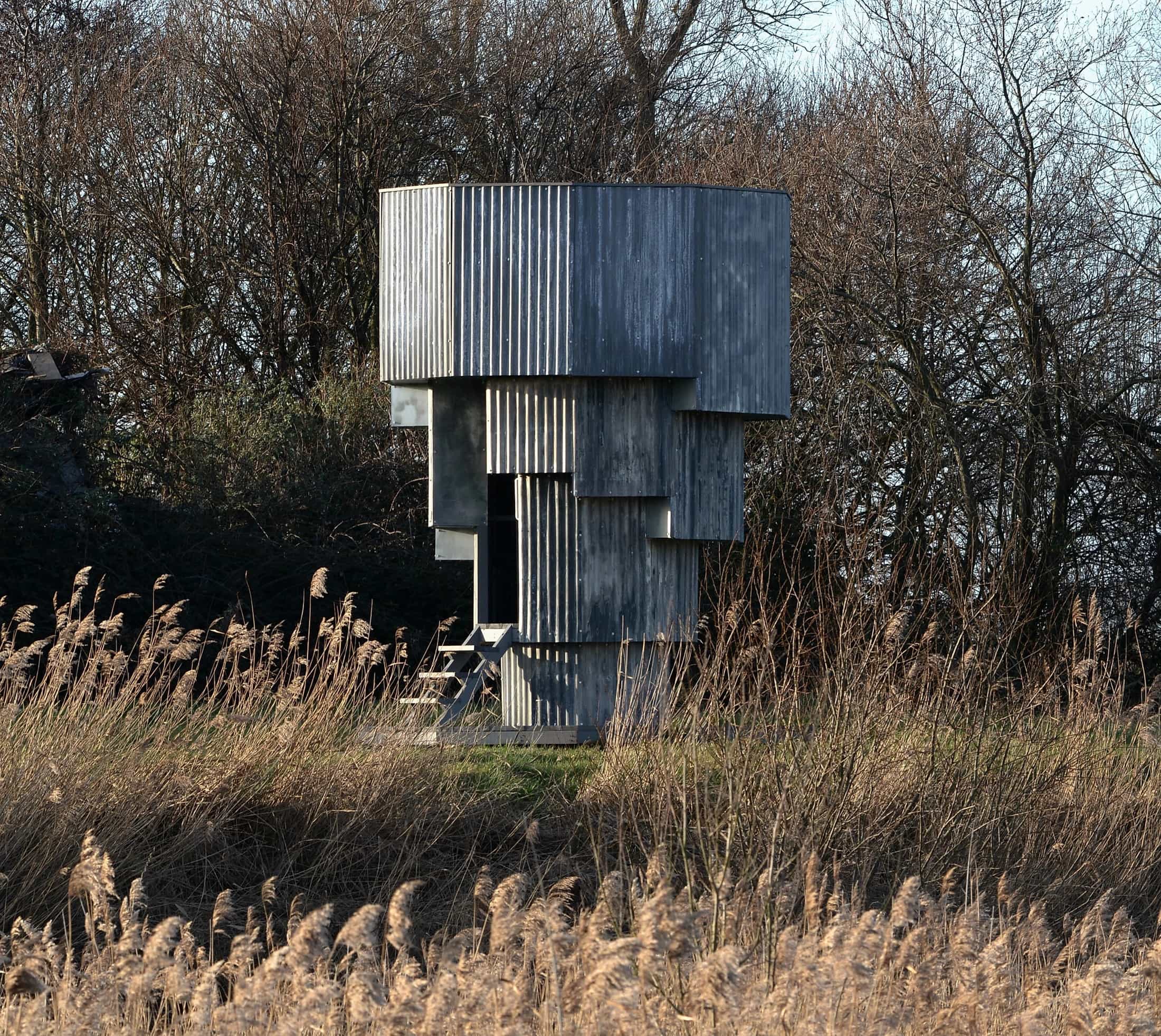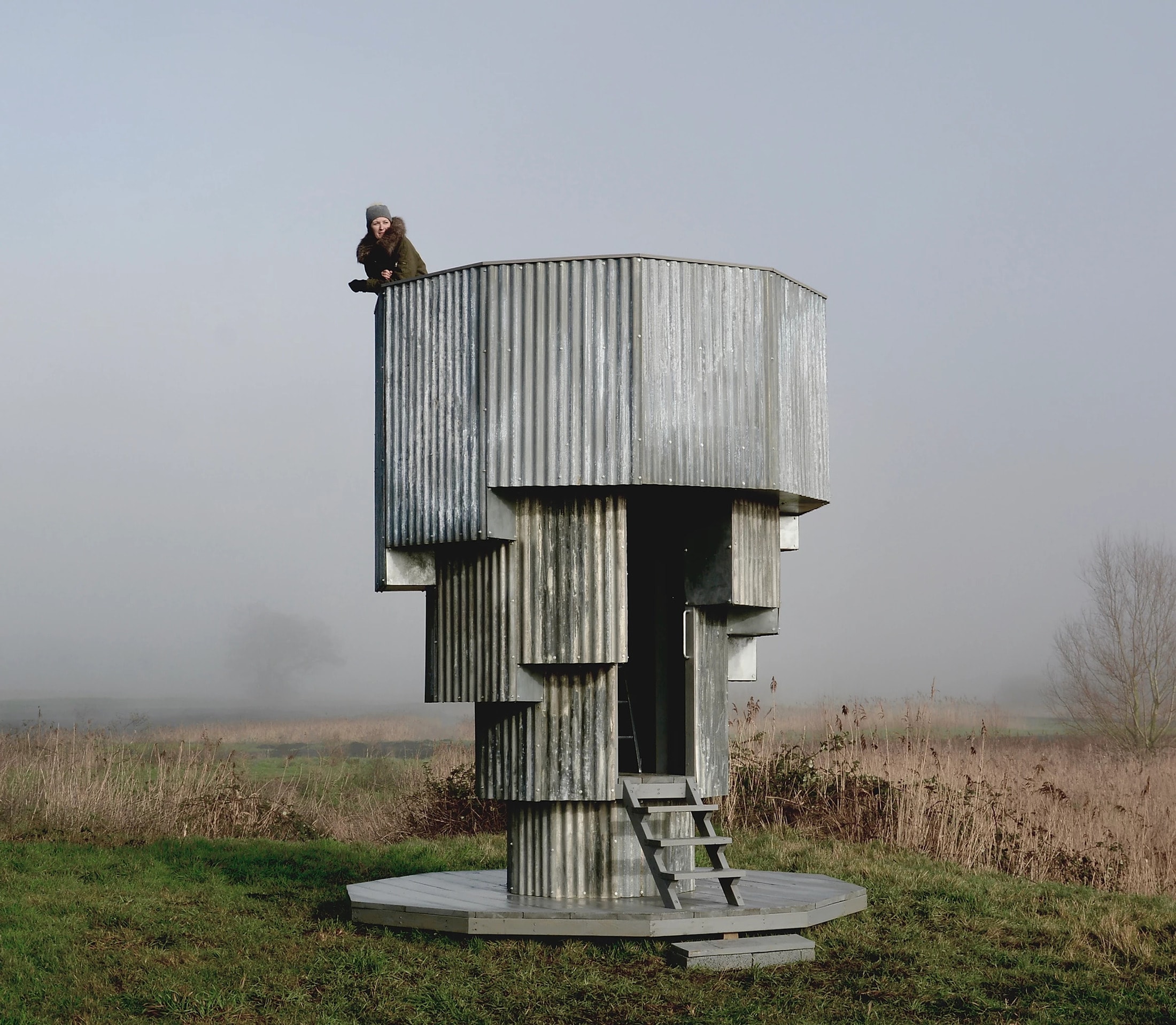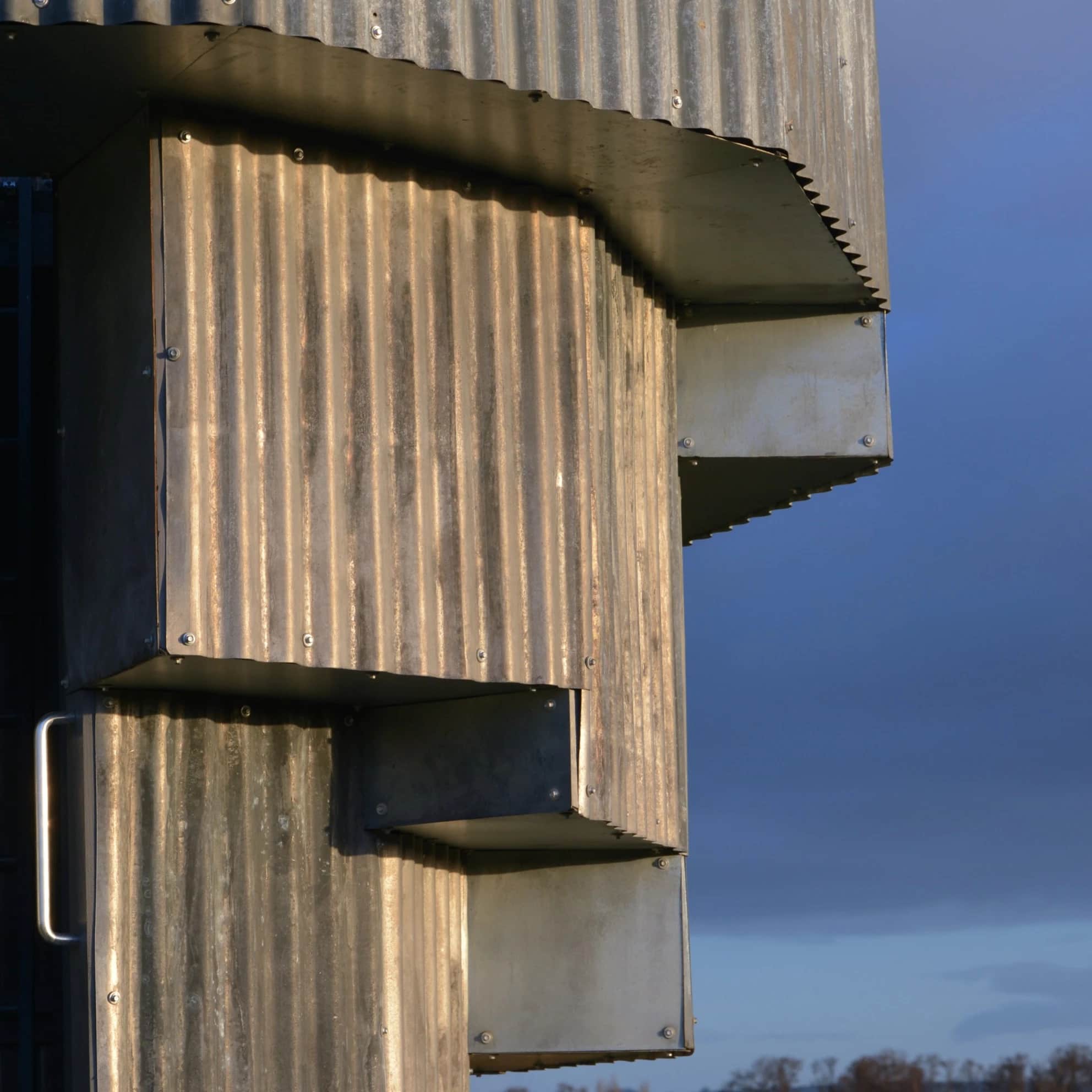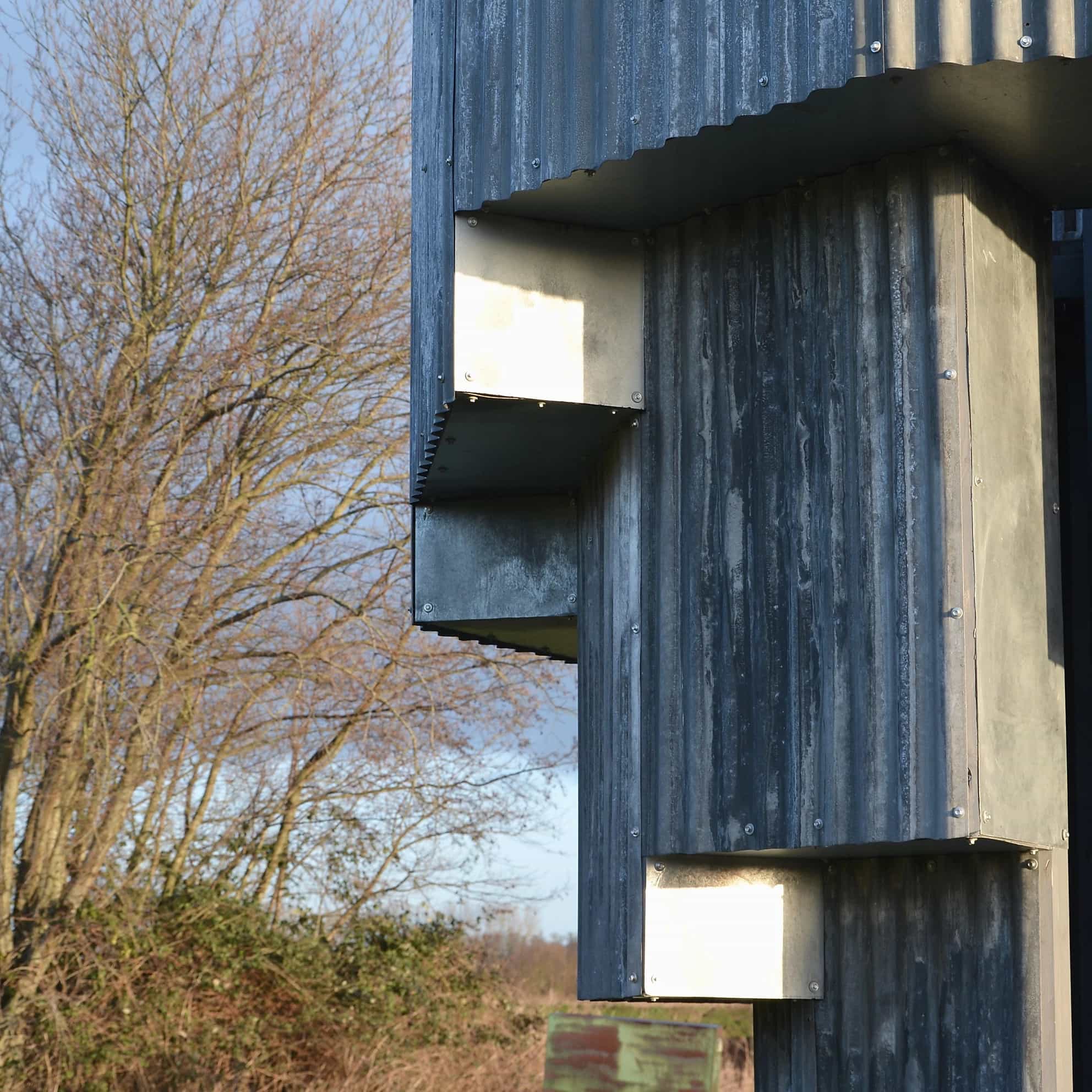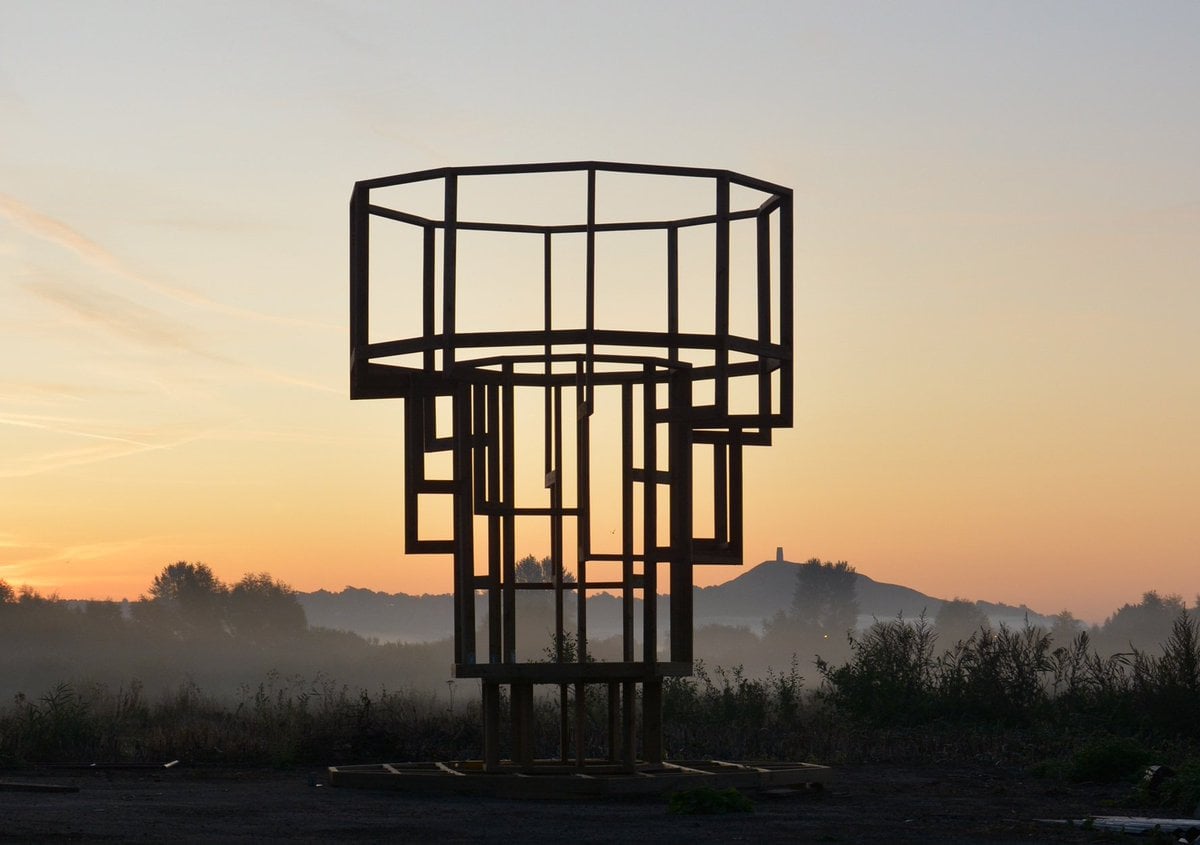Partially a bird hide, partially a sculpture, the “wilderness tower” designed by Marcus Jefferies, draws incentive from middle eastern tomb towers and brutalist architecture. Adam Williams approved this piece of art, to situate it in the land encircling their Somerset studios. The “Wilderness tower” is located at Glastonbury heath marshes, knows for its excellent wildlife environment. Nearby, there is an RSPB reserve, which is home to profusion or indigenous and unique birds. Marcus Jefferies designed it with one purpose – to be able to watch the local wildlife closely. The sculpture draws attention and inspiration from the agricultural structures such as bird hides and water towers and keeps a lasting connection to the neighboring habitat. The tower blends into the landscape because it got created from timber frame and steel in reclaimed metal sheeting extensively in the surrounding area.
Additionally, this tower expands Jefferies’ fascination with geometric design and its association with landscape and nature. The structure involves repeated decagonal shape, which is often found in forms such as flower petals and patterns of holes and cracks on the ground.
Marcus Jefferies got inspired by mesmerizing tomb towers in Iran and the eighteenth-century British folly. He plays around with his artwork, crossing the line between art and architecture. The “Wilderness tower” can be perceived as a restoration of a disappearing movement.
Website: www.marcusjefferies.com/
